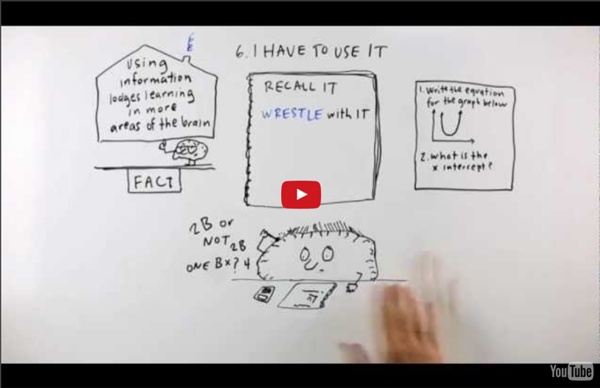



Producción - EDUCATE Las siguientes guías de buenas prácticas han sido elaboradas por la Unidad de Tecnología Educativa e Innovación Docente (UTEID) de la Universidad Carlos III de Madrid (UC3M). Guía de buenas prácticas para la creación de vídeos educativos Su finalidad es ayudar a los profesores en la elaboración de vídeos con contenido docente, tanto si se trata de vídeos elaborados con tableta gráfica destinados a los alumnos de los cursos cero o de MOOCs (Massive Open Online Cursos) como de videos de presentación tipo busto parlante. Se trata de ofrecer una serie de pautas y buenas prácticas desde el punto de vista de la metodología inherente en la creación de un vídeo didáctico. Enlace a la guía en PDF Guía del profesor para la planificación, diseño e impartición de un MOOC Esta guía surge para dar respuesta a las necesidades de apoyo al profesorado de la UC3M que se planteen impartir un MOOC (Massive Open Online Course). Enlace a la guía en PDF Guía del estudiante para el seguimiento de un MOOC
Kodu | Home Starfall's Learn to Read with phonics ICDL - International Children's Digital Library K-5 iPad Apps According to Bloom's Taxonomy An elementary library media specialist reviews iPad apps as they map to an updated version of Bloom's Taxonomy in this six-part series. Diane Darrow is an artist, Reading Recovery teacher, and library media specialist at Bel Aire Elementary in Tiburon, CA. You can follow her on Twitter at @dianedarrow. In this six-part series, I will highlight apps useful for developing higher order thinking skills in grades K-5 classrooms. Each list will highlight a few apps that connect to the various stages on Bloom's continuum of learning. Part One: K-5 iPad Apps for Remembering Part Two: K-5 iPad Apps for Understanding Part Three: K-5 iPad Apps for Applying Part Four: K-5 iPad Apps for Analyzing Part Five: K-5 iPad Apps for Evaluating Part Six: K-5 iPad Apps for Creating
Create a Graph Classic - Bar Graph - NCES Kids' Zone There are all kinds of charts and graphs, some are easy to understand while others can be pretty tricky. There are many different types because each one has a fairly specific use. Bar graphs can be used to show how something changes over time or to compare items. They have an x-axis (horizontal) and a y-axis (vertical). Typically, the x-axis has numbers for the time period or what is being measured, and the y-axis has numbers for the amount of stuff being measured. An example using real education data would be if you wanted to show the most popular bachelor's degrees (business, education, etc.) that students received in college in a given year. You are now ready to create your own bar graph... Click Here To Create a Bar Graph
Student Apps for Winter Reading For families traveling this winter or teachers simply looking for an alternative to tablet games, there are lots of great apps for winter reading. Android devices, iPhones and iPads can be turned into ebook readers with a quick tap or swipe. Portable and kid-friendly, these interactive storybooks will support and engage young readers. Snowman Joe (iOS) Follow along with this musical storybook as readers travel through a winter wonderland. Read Me Stories (iOS and Android) This app is full of picture books with illustrations that children will love. Epic! Another subscription-based service for iPads called Epic! Frozen: Storybook Deluxe (iOS) This storybook app from Disney brings the characters from the Frozen movie to life on your children's iPad screens. Winter Is (iOS) A simple storybook with high-quality illustrations, this app is perfect for reading together as a family or letting your children listen as the narration is read aloud. Dr. A wide variety of classic Dr. A Blizzard of eBooks
What Is Your Learning Style? What Is Your Learning Style? This quiz asks 24 questions and will take less than five minutes to complete. Try not to think too hard -- just go with your first thought when describing your daily activities and interests. By the end, you may have some new insights into your learning preferences. Editor's Note (2013): There is no scientific evidence, as of yet, that shows that people have specific, fixed learning styles or discrete intelligences, nor that students benefit when teachers target instruction to a specific learning style or intelligence. eTEL Robot Turtles | The Board Game for Little Programmers